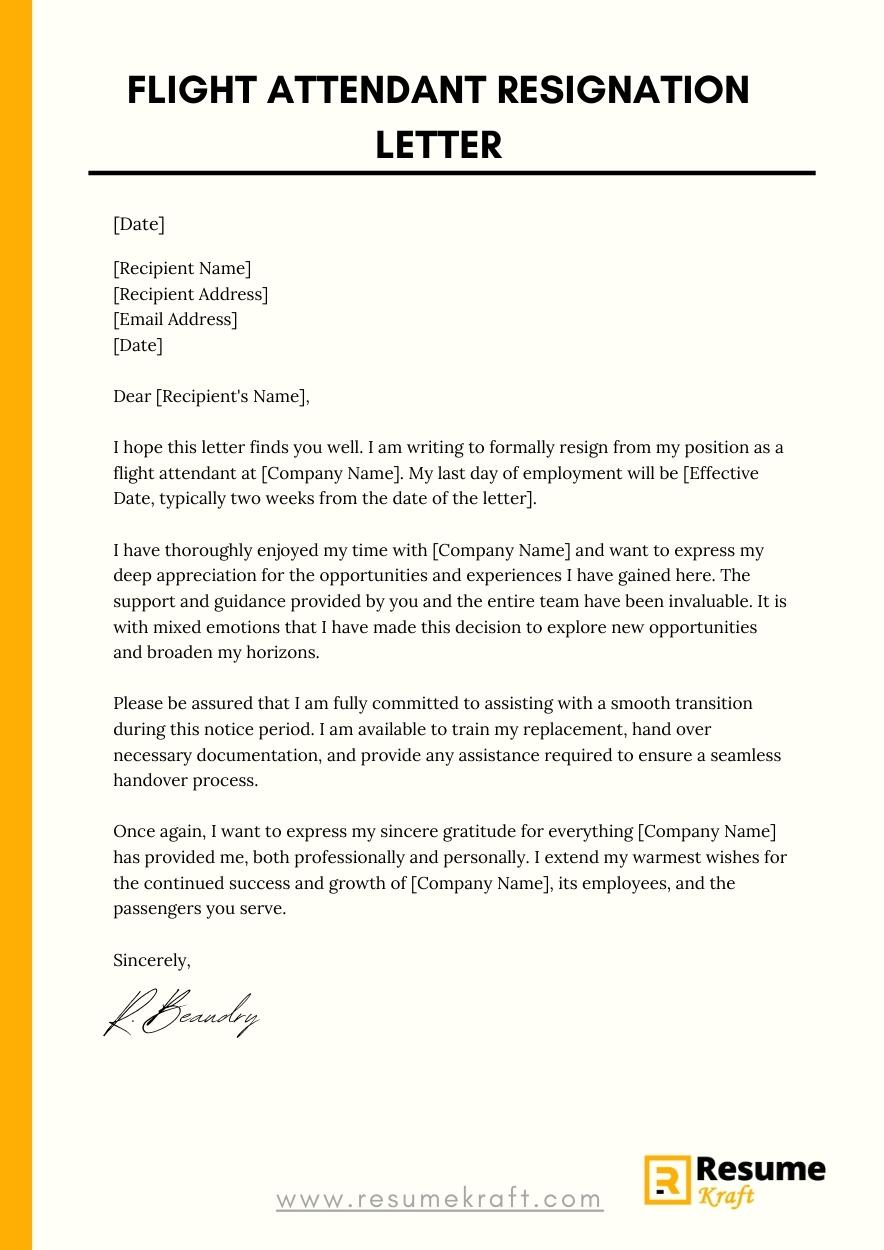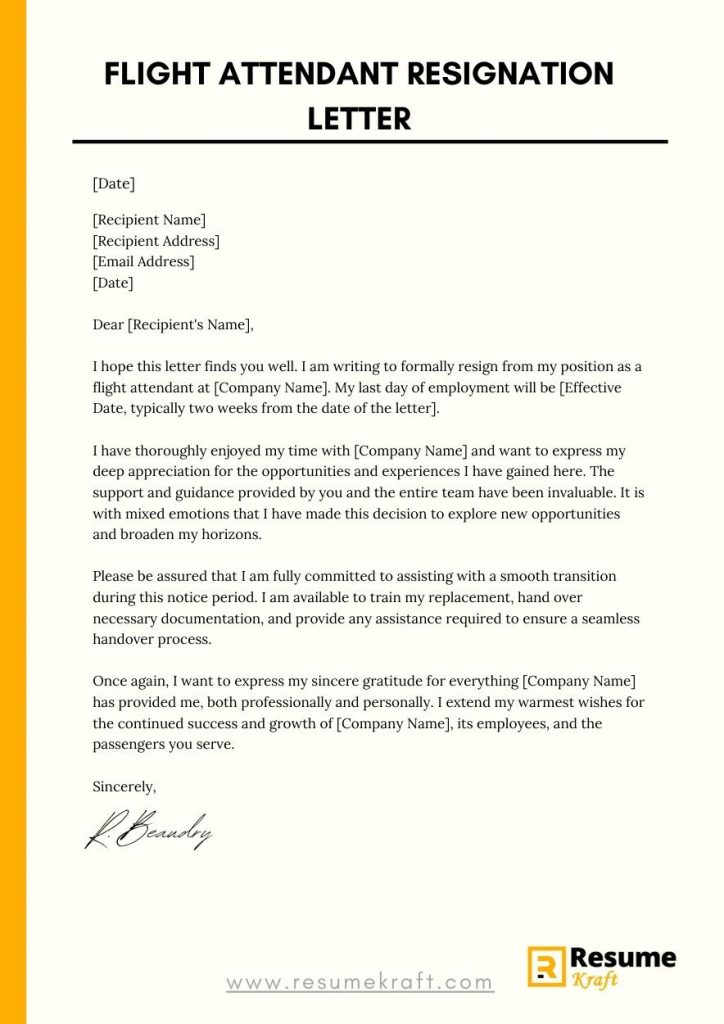
Are you a faculty member planning to resign from your position? Writing a well-crafted resignation letter is an essential part of the resignation process. A resignation letter not only formalizes your departure but also leaves a positive impression about you as a professional. In this article, we will guide you through the process of writing an effective faculty resignation letter. We will provide you with a step-by-step guide on what to include, what not to include, and how to format your letter. Additionally, we will provide you with real person resignation letter samples for your reference.
What To Include in a Faculty Resignation Letter
When writing a faculty resignation letter, it is important to include certain key elements to ensure clarity and professionalism. Here are the essential components to include in your letter:
- Date: Begin your resignation letter by including the date on which you are writing the letter.
- Recipient’s Information: Include the name and title of the recipient, typically the department head or the designated authority who should receive your resignation letter.
- Salutation: Address the recipient with a polite salutation, such as “Dear Dr. [Last Name]” or “Dear [Title] [Last Name].”
- Statement of Resignation: Clearly state your intent to resign from your position as a faculty member. Include the date on which your resignation will be effective, as per your contractual obligations.
- Reason for Resignation (Optional): If you feel comfortable, you can provide a brief and factual explanation for your resignation. However, it is not mandatory to include this information.
- Gratitude: Express your gratitude towards the institution, your colleagues, and the students you have worked with during your tenure. Highlight specific experiences or opportunities that have been impactful in your professional growth.
- Transition Assistance: Offer your assistance in transitioning your responsibilities to a suitable individual and ensure a smooth handover process. This demonstrates your commitment to a successful transition and leaves a positive impression.
- Closing: Sign off your letter professionally. Some common closing phrases include “Sincerely,” “Best regards,” or “Yours faithfully.” Follow it with your full name and, if necessary, any contact information.
What Not to Include in Your Faculty Resignation Letter
While it’s important to include certain elements in your faculty resignation letter, there are a few things you should avoid including. Here are some items that should not be a part of your resignation letter:
- Negativity or Criticism: It’s crucial to refrain from expressing any negative opinions or criticisms about the institution, colleagues, or policies. Maintain a positive tone throughout your letter.
- Emotional Content: Keep the letter professional and avoid including emotional or personal details that may detract from the main purpose of the letter.
- Counter Offers: Avoid discussing or entertaining any counter offers presented to you from the institution. Focus on your decision to resign and the reasons behind it.
- Excessive Details: Keep your resignation letter concise and to the point. Avoid including unnecessary details or explanations that might dilute the main message of your resignation.
- Procrastination: Resignation letters should be submitted in a timely manner, providing the institution with ample notice based on the terms stated in your employment contract. Avoid delaying the submission of your resignation letter.
How To Format a Faculty Resignation Letter
The format of your faculty resignation letter should be professional and well-structured. Follow these formatting guidelines to ensure your letter is clear and easy to read:
- Use a Professional Tone: Maintain a professional and formal tone throughout your letter. Remember, this letter will become part of your professional record.
- Use a Clear and Readable Font: Opt for a font that is professional and easy to read, such as Arial, Calibri, or Times New Roman. Use an appropriate font size, typically between 10-12 points.
- Keep the Letter Concise: Resignation letters should be concise and to the point. Aim to keep your letter to one page, if possible.
- Use Proper Salutations and Closings: Begin your letter with a formal salutation, addressing the recipient directly. End your letter with a professional closing phrase, followed by your full name and contact information if necessary.
- Proofread and Edit: Before submitting your resignation letter, ensure it is free of any grammatical errors or typos. Review it carefully for clarity, coherence, and professionalism.
Faculty Resignation Letter Sample

Printed Resignation Letter Sample
[Your Name]
[Your Address]
[City, State ZIP Code]
[Email Address]
[Phone Number]
[Date]
[Recipient’s Name]
[Recipient’s Title]
[Institution/Organization Name]
[Institution Address]
[City, State ZIP Code]
Dear Dr. [Last Name],
I am writing this letter to formally resign from my position as a faculty member at [Institution/Organization Name], effective [Resignation Date]. I have accepted a new opportunity that aligns with my career goals and allows for personal growth.
I want to express my deepest gratitude for the opportunities I have had during my tenure at [Institution/Organization Name]. The institution has provided me with a supportive and enriching environment, which enabled me to excel in my field and contributed significantly to my professional growth.
I have thoroughly enjoyed working with my colleagues, who have consistently inspired me with their dedication, knowledge, and passion for teaching. Additionally, I would like to extend my appreciation to the students who have been an absolute joy to work with, and their commitment to learning has been truly inspiring.
To ensure a smooth transition, I am more than willing to assist in the handover of my duties and responsibilities. I believe this will help maintain continuity and uphold the high standards of education provided by the institution. Please let me know how I can be of assistance during this transition period.
Thank you again for everything. It has been an absolute honor to contribute to the success of [Institution/Organization Name]. I am confident that the institution will continue to thrive, and its impact will only grow stronger. I wish everyone the very best for the future.
Sincerely,
[Your Full Name]
Email Resignation Letter Example
Subject: Faculty Resignation – [Your Name]
Dear [Recipient’s Name],
I hope this email finds you well. After careful consideration, I have decided to resign from my position as a faculty member at [Institution/Organization Name], effective [Resignation Date].
I want to express my deepest gratitude for the valuable experiences, growth opportunities, and support that [Institution/Organization Name] has provided me during my tenure. It has been a privilege to work alongside such esteemed colleagues and to contribute to the academic excellence upheld by the institution.
As I transition towards new endeavors, I am committed to ensuring a seamless handover of my responsibilities. Please let me know how I can assist in this process and support the continuity of excellence in education that [Institution/Organization Name] stands for.
I would like to extend my heartfelt thanks to the students who have made teaching a rewarding experience. Their enthusiasm and dedication have been a constant source of inspiration.
I genuinely appreciate the opportunities I have had at [Institution/Organization Name], and I am confident that its trajectory will continue to be marked by success. I wish everyone at the institution the very best.
Should you require any additional information or further discuss the transition process, please feel free to reach me at [Your Email Address] or [Your Phone Number].
Thank you for your understanding and support.
Best regards,
[Your Full Name]
Key Takeaways
Writing a faculty resignation letter is an important step in the resignation process. Keep the following key takeaways in mind:
- Include essential components such as the date, recipient’s information, statement of resignation, gratitude, and offer of transition assistance.
- Avoid negativity, emotions, excessive details, and discussions about counter offers in your resignation letter.
- Format your letter professionally, using a suitable font, clear headings, and a concise writing style.
- Proofread your letter for errors before submitting it.
Frequently Asked Questions
1. How much notice should I provide in my faculty resignation letter?
It is generally advisable to provide at least two weeks’ notice, as it allows the institution to plan for your departure and make necessary arrangements. However, refer to your employment contract or the institution’s policies to ensure compliance with the specific notice period required.
2. Can I resign in the middle of an academic semester?
Resigning in the middle of an academic semester can disrupt the continuity of classes and may create challenges for the department and students. It is generally recommended to discuss this situation with your department head or supervisor to find a feasible solution.
3. Should I discuss my reasons for resignation in the letter?
Including the reasons for your resignation is optional. If you feel comfortable and it is appropriate, you can briefly mention the reasons for your decision. However, it is not necessary to provide detailed explanations or negative feedback.
4. How should I address the recipient of my resignation letter?
Use a formal salutation, addressing the recipient by their professional title or their last name, such as “Dear Dr. [Last Name]” or “Dear Professor [Last Name].”
5. Can I deliver my resignation letter via email?
Yes, it is acceptable to deliver your resignation letter via email. Follow a similar structure and professional tone as in a printed letter. Ensure your subject line clearly states that it is a faculty resignation letter.
Conclusion
Writing a well-crafted faculty resignation letter is crucial for a professional and respectful departure. By including the appropriate information, avoiding negativity, and maintaining a professional tone, you can leave a positive impression and ensure a smooth transition process. Use the provided samples as a reference and customize them to fit your particular circumstances. Remember to

